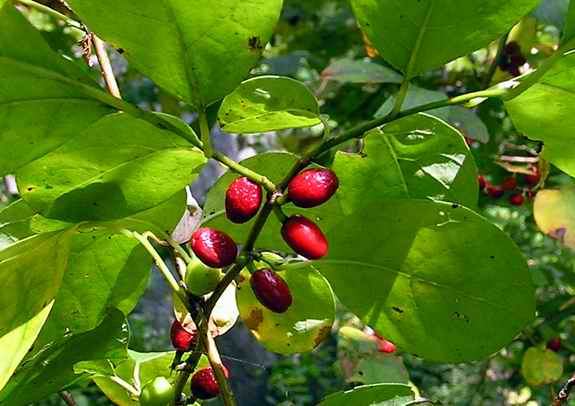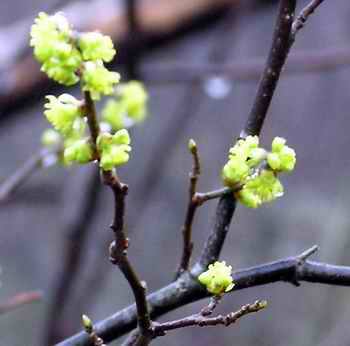|
Common Name: Spicebush, Wild Allspice, Benjamin Bush, Fever Bush Scientific Name: Lindera benzoin (The Genus Lindera is named for the Swedish physician John Linder; benzoin is applied to the species due to the similar odor and taste of the spicebush to the resin obtained from the Indonesian tree Styrax benzoin).
Potpourri: The aromatic berry of the spicebush was widely used by early settlers as a substitute for allspice (made from the berry of the pimento, Eugenia pimenta; so named for the combined flavor of cinnamon, nutmeg and clove). The species name benzoin is also due to its aromatic similarity to benzoic incense from Sumatra, which is also called benjamin. The names Wild Allspice and Benjamin Bush attest to these similarities.
Spicebush is one of the first plants to flower in the spring. Its vivid yellow
blossoms brought it to the
Early pioneers learned of the Indian uses of the spicebush, producing a strong decoction of the bark as a means to induce sweating so as to expel toxins from the system in the treatment of typhoid and other fevers. The name Fever Bush is due to this application. |

 attention of Native Americans, who generally believed that this was an
intentional act of their gods to indicate its potential for their beneficent
use. They accordingly discovered that the leaves and bark could be used to
make an astringent tea to treat menstrual cramps and to induce sweating and
that oil decocted from the berries could be used to treat arthritis and
rheumatism. An insect repellant was made from the leaves, which contain a
small amount of camphor. A mixture of spicebush, sumac and tobacco called
Kinnikinnick was smoked in pipes.
attention of Native Americans, who generally believed that this was an
intentional act of their gods to indicate its potential for their beneficent
use. They accordingly discovered that the leaves and bark could be used to
make an astringent tea to treat menstrual cramps and to induce sweating and
that oil decocted from the berries could be used to treat arthritis and
rheumatism. An insect repellant was made from the leaves, which contain a
small amount of camphor. A mixture of spicebush, sumac and tobacco called
Kinnikinnick was smoked in pipes.